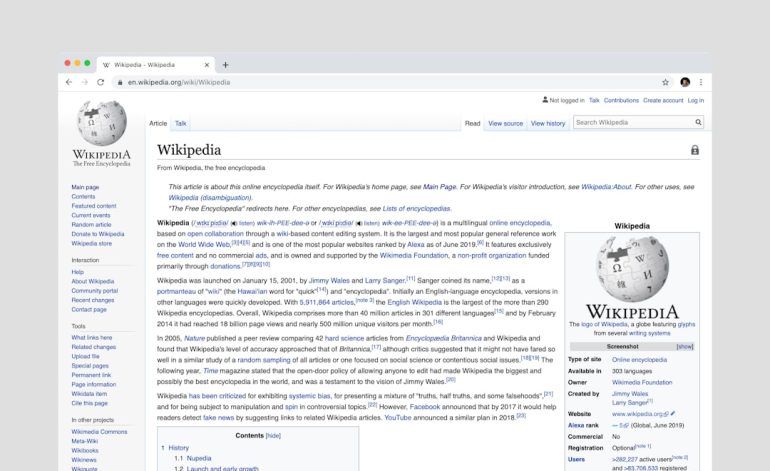Product Roadmaps That Don’t Break Trust (2025)
In an increasingly transparent and customer-centric world, the way companies communicate their product roadmaps has never mattered more. As we move deeper into a time where instant feedback, online critique, and rapid iteration are the norm, failing to manage expectations can do more than just derail development—it can break trust entirely. The challenge for product leaders in 2025 isn’t just in building innovative software; it’s in doing so while keeping users, stakeholders, and teams aligned and confident. A product roadmap isn’t just an internal tool—it’s a contract of intent.
Why Trust Matters in Product Roadmaps
Table of Contents
Trust is one of the most fragile currencies in product management. Each promise about a new feature, a deadline, or a long-term vision becomes a benchmark by which a company is judged. When you miss those expectations or shift direction without adequate communication, clients and users may begin to question your reliability and, eventually, your integrity.
Misaligned or overly optimistic roadmaps can cause more reputation damage than simply saying “we’re not sure yet.” Users today are sophisticated—they appreciate transparency and find comfort in clear, honest communication that acknowledges uncertainty without ambiguity.
Common Pitfalls That Break Trust
- Overpromising and Underdelivering: One of the most common ways roadmaps fail is through commitments to timelines or features that are not realistically achievable.
- Lack of Clarity: Vague labels like “Coming Soon” or “Q4 Goals” without explanation can confuse stakeholders and set unspoken expectations that, if unmet, reflect poorly on the team.
- Shifting Priorities Without Communication: Changing a roadmap due to new priorities isn’t inherently bad—but doing it silently is.
- Misalignment with Customer Needs: A roadmap that serves internal desires more than end-user requirements can quickly be seen as disconnected or unresponsive.
Principles for Roadmaps That Build Trust
Modern roadmaps in 2025 should follow a few fundamental principles that ensure credibility. These principles are not just about building great products—they’re about being great communicators.
- Be Transparent—But Not Reckless: Share what you know, explain what’s uncertain, and avoid pretending to have all the answers. A good roadmap shows direction and flexibility, not rigidity.
- Use Language Thoughtfully: Terms such as “Planned”, “Exploring”, or “In Development” are better than fixed dates when uncertainty remains. Labels should be understandable at a glance, whether for internal teams or customers.
- Embrace Two-Way Communication: Use the roadmap as a dialogue—not a monologue. Let customers and internal stakeholders react, give feedback, and contribute.
- Make It Living: A roadmap is not a PDF. It’s a living, breathing document that should evolve while remaining documented and traceable. People don’t lose trust when things change—they lose trust when change isn’t communicated.
Strategic Roadmap Structures for 2025
Different companies have unique needs, but certain structural best practices can be applied across most organizations today. The goal is to keep the roadmap coherent, trustworthy, and user-friendly—whether it’s a SaaS application, an enterprise platform, or a B2B product.
Here are a few effective structures that foster transparency:
- Time Horizon-Based: Use short-term (Next), mid-term (Later), and long-term (Future) lanes to convey intent without committing to rigid deadlines.
- Theme-Based: Instead of laying out individual features, center the roadmap around problem spaces or value areas. For example: “Improving Onboarding Experience” or “Enhancing Mobile Performance.”
- Status-Based: Divide items into categories like “Under Consideration,” “Planned,” “In Progress,” and “Released.” This emphasizes motion and intent without requiring specific ETAs.

The Importance of Internal Alignment
A trustworthy roadmap isn’t just for customers—it starts inside the company. If Sales, Marketing, Engineering, and Support don’t have the same understanding of the product vision and status, the inconsistencies quickly see daylight in customer interactions.
Product leaders in 2025 should:
- Hold Regular Roadmap Syncs: Encourage feedback and alignment between departments on updates or shifts in priority.
- Document Assumptions Clearly: If a release date depends on a hiring milestone or third-party integration, say so. It shows prudence and manages expectations internally and externally.
- Enable Controlled Visibility: Use different layers of the roadmap for different audiences. An internal roadmap can be more granular and speculative than the external one provided to customers and partners.
External Roadmaps: The Trust-Facing Edition
When publishing roadmaps externally, the stakes are higher. A misstep with external communication can quickly spiral into broken promises. Companies should aim to share enough to inspire, but not mislead.
Best practices include:
- Provide Rationale for Inclusions and Exclusions: Users are more understanding when they know why something isn’t being prioritized.
- Avoid Feature Dumping: Instead of offering a bullet list of features, explain what problems are being solved and how these solutions bring value.
- Set Boundaries: Include disclaimers such as “subject to change” and clarify that roadmaps are directional, not legally binding schedules.

Tools That Help Maintain Trust
A roadmap’s effectiveness depends partly on the tools used to create, maintain, and share it. In 2025, more organizations are embracing product management platforms that integrate roadmap planning with user feedback, analytics, and agile progress tracking. Some notable platforms include:
- Productboard: Connects roadmaps to customer feedback and priorities.
- Aha!: Offers strategic planning and custom roadmap views for different stakeholders.
- Roadmunk: Allows for tailored views across teams and departments while maintaining a core source of truth.
- Notion + Jira Integrations: Enables lightweight planning within collaborative knowledge bases while syncing with development pipelines.
Customer Involvement and Feedback Loops
The most trustworthy roadmaps are those co-created with the people they serve. Involving users throughout the process improves accuracy and ensures alignment with real market needs.
Methods for integrating feedback into roadmaps include:
- User Advisory Boards: Select panels of active users who review plans quarterly or semi-annually.
- In-app Feedback Widgets: Lightweight tools that let users vote, comment, or react to proposed features.
- Analytics-Driven Decisions: Use product usage data to inform roadmap decisions and share those insights with your audience to validate changes.
When Things Change: Repairing Trust
No roadmap is perfect, and no team hits every deadline. But users are willing to forgive if you’re honest, proactive, and care to explain. When significant shifts are necessary, employ these steps:
- Communicate Early: Don’t wait for users to ask. Push out change notes explaining the “what” and “why.”
- Offer Alternatives or Compromises: Can a delay in one feature be offset by early delivery of another?
- Admit Mistakes Openly: False optimism hurts more than humility. Acknowledge what went wrong and what you’re doing moving forward.
Conclusion: Leading with Truth
In many ways, the hallmark of a mature product organization in 2025 is its ability to align ambition with credibility. Trustworthy roadmaps don’t just secure product success—they secure brand reputation, nurture user loyalty, and create space for innovation by fostering honest relationships.
If users and stakeholders believe in not only where you’re going but why and how you’re getting there, you’ve already won half the battle.
Building trustworthy roadmaps isn’t just a process—it’s a promise. And in a world where trust compounds value far beyond any single feature or release date, that promise is your most valuable asset.







